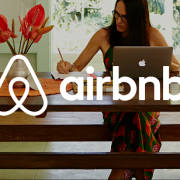Changes looming in the Airbnb space
There is no doubt that Australians and visiting tourists have embraced
Airbnb accommodation sharing with gusto.
In fact, in 2017 there were 5,090,000 Airbnb bookings in Australia.
Globally, the company has enabled 260 million check-ins in 191 countries.
Airbnb is not just a city sensation
In 2017 Airbnb reported that Australia was the only major country in the world where regional Airbnb stays surpassed city bookings accounting for 56% of guest arrivals in the prior year.
According to The Australian, during that time popular regional destinations included Cairns, Noosa, Byron Bay, Great Ocean Road, Margaret River, Victor Harbour and Kangaroo Island.
There are many pros and cons of Airbnb hosting. The real motivator for most hosts is making money from available unused space in their home or investment property.
Links to housing and rental prices
There has been much attention on the effect that Airbnb has on long term rental availability, affordability and the supply versus demand scale. A concern held by many is that short-term tourism accommodation is infiltrating residential neighbourhoods, thereby reducing the permanent rental housing supply in high demand cities and increasing rental prices.
A global phenomenon
Withdrawing properties from the long term rental market for money making Airbnb rentals has caused a ripple effect in some cities around the world.
For instance, Barcelona, New York and Amsterdam have responded by placing restrictions on how long properties can be offered for Airbnb rental. In fact, Amsterdam will halve its limit to just 30 nights in 2019.
Local Airbnb reforms
The money making machine of Airbnb hosting is taking a different turn in Australia too… well, for some (for now).
The NSW State Government has handed down laws governing short-term holiday rentals for Greater Sydney.
In short:
• Airbnb properties in Sydney will be restricted to 180 nights a year
• A mandatory code of conduct will be enforced to address disruptive guests, noise levels and the effects on neighbourhoods
• A two-strike policy will be introduced whereby if hosts or guests breach the code twice within a two year period they will be banned for five years
• A dispute resolution process will be in place to resolve complaints
• Owners’ corporations can adopt a bylaw with a 75% majority to prevent property owners who do not live in their unit from short-term letting their property
For areas outside of Greater Sydney, councils will have the power to reduce the days a property can be short-term let down to a maximum of 180 days.
The wave of change may be spreading
Potentially Sydney siders aren’t the only ones set for change. We are seeing other areas of Australia also considering such changes.
There is pressure on Victoria to follow Sydney’s lead. Some developers have taken it into their own hands and banned Airbnb and short-term holiday letting from their new Melbourne apartment developments.
At least three councils in WA are preparing to draft new policies on short-term accommodation.
For property investors..
Property investors using Airbnb for income should be aware of these changes in Sydney. Although some would say a 180 night maximum is still a fair income opportunity, it is a restriction nonetheless and one that will impact income.
Future apartment investors with Airbnb in their sights also beware. The new owners’ corporation bylaw could see your future income diminish.
As for other cities and regional areas throughout Australia, time will tell if the wave of change is coming to you. Lastly, as with all investment decisions, make sure you find a great finance specialist – like us – who understands property structuring and finance, and who keeps an eye on housing trends.
We work with you to understand your long term financial goals and the structure suitable for your individual circumstances. CONTACT US NOW!




